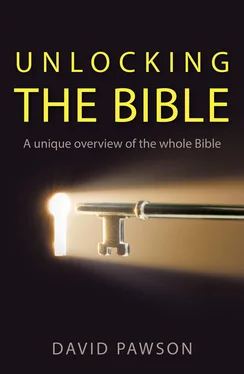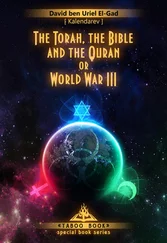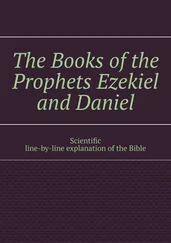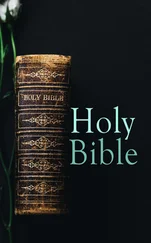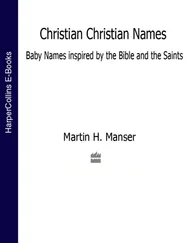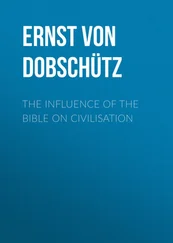Choosing between science and the Bible thus has problems attached. We should not accept scientific truth unquestioningly, but neither should we be foolish enough to call people to commit intellectual suicide in order to believe the Bible. It is not necessary.
SEGREGATION
The second approach is to keep science and Scripture as far apart as possible. Science is concerned with one kind of truth and Scripture with another. This view claims that science is concerned with physical or material truth, whereas Scripture is concerned with moral and supernatural truth. The two deal with entirely separate issues. Science tells us how and when the world came to be. Scripture tells us who made it and why. They are to be kept entirely separate for there is no overlap to be concerned about. Science talks about facts; Scripture talks about values and we should not look to the one for the other.
This approach has become very common even in churches. It comes from a mindset shaped by Greek thinking, where the physical and the spiritual are kept in two watertight compartments. This kind of thinking is alien to the Hebrew mind, however, which saw God as Creator and Redeemer, with the physical and the spiritual belonging together.
If we take this segregated approach to Genesis we will be forced to treat the narrative as myth. Genesis 3 becomes a fable entitled ‘How the snake lost its legs’, and Adam becomes ‘Everyman’. The book becomes full of fictional stories teaching us values about God and about ourselves, and showing us how to think about God and about ourselves – but we must not press them into historical fact.
Just as Hans Christian Andersen wrote children’s books which taught moral values, according to this approach Genesis has stories with moral truths but no historical truth. Adam and Eve were myths, and Noah and the Flood was also a myth. This outlook extends beyond the Genesis narratives, of course, for once one questions the historicity of one section of the Bible it is a small step to question others also. This approach therefore leaves us with no history left in the Bible: plenty of values but few facts.
As with repudiation, then, the attempt to segregate science and Scripture also has its problems. In fact, Scripture and science are like overlapping circles: they do deal with some things that are the same and so apparent contradictions must be faced. And it undermines the whole Bible if we pretend that it is factually inaccurate but still has value. How then are we going to resolve the problem? Can the third approach help us bring science and Scripture together?
INTEGRATION
In trying to understand how to integrate the two, we need to remember two basic things, both equally important: the transitional nature of scientific investigations, and the changes in our interpretation of Scripture.
1. Science changes its views
Scientists used to believe that the atom was the smallest thing in the universe. We know now that each atom is a whole universe in itself. It was said until very recently that the X and Y chromosomes decide whether a foetus becomes a male or a female human being. Now this view has been overturned. The discovery of DNA has revolutionized our thinking about life, because we now know that the earliest form of life had the most complicated DNA. DNA is a language passing on a message from one generation to another – and because of that it must have a person behind it.
A generation ago most people would have understood that nature ran according to fixed laws. Modern science now asserts that there is a much greater randomness than we ever imagined. ‘Quantum’ physics is much more flexible.
Geology too is changing and developing. There are now many different ways of finding out the age of the earth. Some new methods are claimed to have revealed the age of the earth to be much younger, with 9,000 years at one end of the spectrum and 175,000 years at the other – much less than the four and a quarter billion years calculated previously.
Furthermore, anthropology is in a state of disorder. The prehistoric men thought to be our ancestors are now seen to be creatures which came and disappeared with no link with us. Biology has changed also, and today fewer people believe in the Darwinian concept of evolution.
All this means that while we should not discount the conflicts between scientific discovery and the biblical accounts, we would be foolish to try to tie our interpretation to a particular scientific age, given that scientific knowledge is itself always expanding.
2. Interpretation of Scripture changes
Just as developments occur in scientific understanding, so the traditional interpretations of Scripture can also change. The Bible is inspired by God, but our interpretation of it may not always be. We need to draw a very clear distinction between the Bible text and how we interpret it. When the Bible talks about the four corners of the earth, for example, few people today interpret that to mean the earth is a cube or a square. The Bible uses what is called the language of appearance. It talks about the sun rising in the east, setting in the west and running around the sky. But that, as we know, does not mean that the sun is moving around the earth.
Once we understand that scientific interpretation is flexible and that our interpretation of the Bible may change, we can then seek to integrate science and the Bible and make balanced judgements where contradictions seem to exist.
THE ‘DAY’ IN GENESIS 1
Such an ‘integrated’ judgement is much needed when we come to consider the arguments regarding the days in Genesis 1, a traditional battlefield in the science versus Scripture debate.
The problem of the days described in Genesis 1 and the real age of the earth was heightened by the fact that some Bibles used to be published with a date alongside the first chapter, namely 4004 BC. This was calculated by an Irish archbishop called James Ussher (another scholar went on to claim that Adam was born at 9 a.m. on 24 October!) All this despite the fact that there are no dates in the original until Chapter 5.
Ussher made his calculations based on the generations recorded in Genesis, unaware that the Jewish genealogies do not include every generation in a line. The words ‘son of’ may mean grandson or great-grandson. It is easy to discount Ussher’s date, but we are still faced with a conflict between the apparent biblical assertion that creation took six days and the scientific assertion that it took much longer.
What was meant by the word ‘day’ in the original language? This is the Hebrew word Yom, which does sometimes mean a day of 24 hours. But it can also mean 12 hours of light or an era of time, as in the phrase ‘the day of the horse and cart has gone’.
Bearing these alternative meanings in mind, let us consider the different views of the day in Genesis 1.
Earth days
Some take the word ‘day’ literally as an earth day of 24 hours. This conflicts with the scientists’ assessment of the geological time it would take to create the earth, given its apparent age.
A gap in time
Some suggest a gap in time between verse 2 and verse 3. They argue that after we read that ‘the earth was formless’ in verse 2, there is a long gap before the six days when God brings everything else into being. So the earth was already in existence before God’s work began in the six days. That is a very common theory, found in the Scofield Bible and other Bible notes.
A second way of finding more time is to explain it by reference to the Flood. There have been various books published, notably connected with the names Whitcome and Morris, which have said that the geological data we have all comes out of the Flood, the ‘apparent’ age of rocks the result of this inundation.
The illusion of time
Читать дальше
